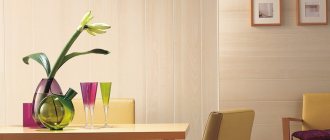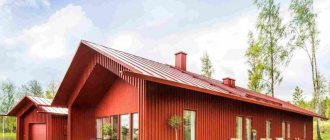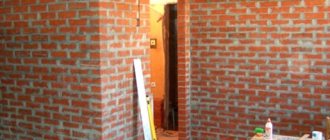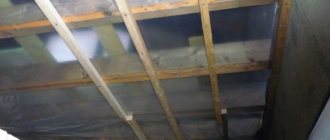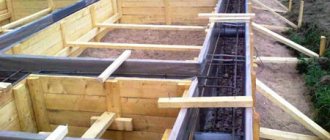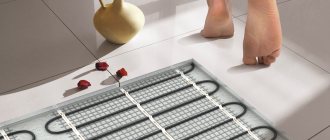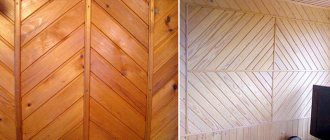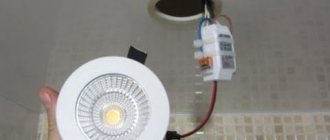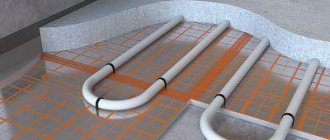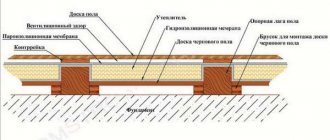Among all the numerous types of wall decoration, PVC panels are one of the most budget-friendly. But in terms of performance characteristics, these materials meet most of the rather stringent requirements of modern consumers. Let's look at how to attach plastic panels to the wall, as well as the features of choosing and using such a finish.
How to attach plastic panels to the wall
Brief characteristics
Before making a final decision, each developer must know all the objective parameters of the selected material, because this is the only way to be sure that during operation there will be no disappointment in the chosen finish. We will look at both the positive and negative sides of plastic panels, since some of them have a direct impact on installation technology.
Types of plastic panels
Prices for plastic wall panels
Wall plastic panels
Requirements for glue characteristics
The difficult microclimate in the bathroom places high demands on finishing materials and means for their fastening, so PVC panels can only be glued with special compounds. High humidity, constant temperature changes and a favorable environment for the development of mold or mildew mean that conventional glue does not provide reliable fixation.
Glue
The adhesive used to attach plastic panels must have the following qualities:
- Moisture resistant. In the bathroom, the humidity exceeds permissible standards, so only moisture-resistant brands of glue can be used for gluing.
- Resistant to temperature changes.
- Tolerance to ultraviolet rays.
- High antibacterial properties. A bath with a humid and warm microclimate is an ideal environment for the development of pathogenic microflora. To prevent the spread of fungus, you can glue plastic panels using special compounds with antibacterial additives.
Please note that the quality of the glue, along with compliance with the wall preparation technology, affects the service life of wall finishing with plastic panels. Plastic can be glued with almost any adhesive, since it is lightweight, but whether it will withstand 10-15 years of use is a big question.
Advantages of PVC panels
There are quite a lot of them, these are objective data that you can trust.
- Light weight. The additional load is so insignificant that it is not taken into account during the design of the building. Finishing can be done on fragile surfaces; the coating is not afraid of minor temperature fluctuations in the linear dimensions of the room.
- Manufacturability. Plastic panels are very quickly mounted on metal or wooden frames. The former are more expensive, the latter are much cheaper. When it comes to quality and durability, there is no practical difference. An important advantage is that the panels can be installed on uneven and unplastered walls. Finishing masonry materials to level them requires a lot of time and money. Another quality related to manufacturability is that when decorating walls with PVC panels, there is no need to use special expensive devices and tools. The complexity of the installation is accessible to beginners.
Fastening the panels does not require much effort
- Low cost. It is important to know that not only panels have a low price - the cost of installing them is also much cheaper than finishing walls with other materials.
- Moisture resistance. This is a significant advantage if there is a need to finish walls in rooms with high humidity. Moreover, the material does not react at all to direct contact with water.
PVC panels are often used in bathroom decoration
PVC lathing: material calculation
Decorating the walls with plastic suggests that the electrical cables will be laid hidden. In this case, various types of sheathing are used. A metal profile and wood slats are the main parts that will be needed to create it.
When calculating, actions are performed in the following order:
- The height of the walls of the room is measured.
- The result is divided into the step of placing the slats inside the future sheathing (it is recommended to retreat 50 cm).
- The result of the previous action is multiplied with the perimeter of the room. We get the length of the profile in linear meters.
- The height of the corners in the room is measured separately; this can be done using a tape measure.
- If you multiply this figure with the number of panels, you get the total footage of corner profiles for processing corners.
- The perimeter of doors and windows is added separately. You just need to measure them.
The result will be two values. One is the length of the slats for the sheathing, the second is the length of the corner profile. Do not forget about a certain reserve in case of unforeseen defects. Self-tapping screws and dowels are used to connect the sheathing to the wall.
Disadvantages of PVC panels
Each building material has its drawbacks, and panels are no exception.
- Low physical strength. The panels are made of thin plastic and have a hollow structure. They hold static and dynamic forces very poorly. Moreover, the damage cannot be repaired; the coating has to be completely replaced.
- Evaporation of harmful chemical compounds. There is a particularly high concentration of unlicensed goods. In addition, during combustion, toxic smoke is released, a person loses consciousness even after two or three breaths.
- Negative reaction to hard ultraviolet radiation. Under the influence of UV rays, the intermolecular bonds of polymer plastics are significantly weakened and they become brittle. Even with little effort they crack.
The panel can be damaged by a sharp blow
Unfortunately, the domestic building materials market is oversaturated with fakes. Low-quality PVC panels are almost completely devoid of real advantages, and the negative sides appear even more noticeably.
When fastening without a frame is impossible
There are a number of cases when certain restrictions are imposed due to which it is simply impossible to attach plastic panels without a frame.
Among the main such cases are:
- the wall has significant defects or unevenness;
- the old coating is not removed or is partially removed;
- the wall surface does not dry out.
Of course, this is not a complete list, since in each individual situation and room the conditions may be different.
Tips for choosing
Universal advice is to ask the seller for a package of accompanying documents. But it always works: either the seller does not show invoices and certificates, then substandard goods are sold under the guise of one batch of good goods, or the consumer is embarrassed to defend his rights. There are several external signs by which you can most likely distinguish a counterfeit from a licensed product.
It is best to buy PVC panels in large construction stores, where all products are licensed
Table. The main differences between high-quality and low-quality panels
| Name of criterion | Quality panels | Low grade panels |
| Number of stiffeners | 29 pieces at perfectly equal distances from each other | 20 pieces, you can notice the unevenness of the step by eye |
| PVC thickness | 2 mm | 1.5 mm |
| Linearity Options | All surfaces are smooth, the planes do not have depressions or bumps | Traces of shrinkage are clearly visible on the surface. Excessive shrinkage is explained by the use of low-quality secondary raw materials for production. |
| Mechanical strength indicators | The panels bend and can withstand relatively heavy physical loads. After removing the stress, the panels completely restore their original performance. | The strength of the panels does not allow them to bend; the thin side strips for fixing the lamellas are very fragile and often crack when driving in staples. The plasticity of the panel surface is minimal. |
Good quality panels have a uniform pattern, straight cuts, stiffeners are located at the same distance from each other
Basic methods of attaching slats
There are several installation methods. To do this, glue, screws and clamps are used. To use the first option, you need to have very even and smooth walls in the house. Regular adhesives will not mount the panels. You need to acquire special tools.
If you use glue for PVC panels, this method will greatly facilitate and reduce the cost of the installation process, since there is no need to attach the sheathing.
Installation of plastic sheets is not difficult
But the main drawback is that if damaged, it cannot be removed from the wall; it will have to be torn off along with the primer.
Installation with glue is carried out as follows:
- The foundation is being prepared. Dirt is wiped off the wall.
- The reverse side is treated with adhesive. The glue is applied in thin strips at a short distance from each other.
- The rail is applied to the desired location and gently pressed, holding for a few seconds.
Liquid nails have some specific features. For example, if you apply them to a panel and attach them to the ceiling, you will have to wait half an hour for the glue to set.
To avoid having to wait so long, you need to:
- Treat the panel with the product and wait for 6-7 minutes.
- Attach it to the ceiling, so it will stick faster.
You must first apply a primer to the ceiling base. This will make it easier for the panels to adhere to the wall.
Another fastening method is to use self-tapping screws. This is a reliable option that does not require perfectly leveling the surface. To screw in the screws, you will have to get a screwdriver, otherwise installation will take a lot of time.
Plastic lathing is considered one of the most affordable and reliable
The disadvantages are that a wooden frame is more suitable for self-tapping screws, so you will have to first saw the timber and treat it with an antiseptic.
The most popular installation of plastic panels is with clamps. They can be quickly attached to the battens and the slats can be securely fixed to the wall. The lathing is made from a metal profile, and damaged lamellas can be easily replaced with new ones.
Stages of work production
None of the professional builders begins work without prior preparation. What activities are included in this list?
- Careful inspection of the premises. Pay attention to the condition of the walls, the purpose of the room, microclimate parameters and operating conditions of the building. Decide on the fastening method, prepare tools and devices taking into account the fastening technology.
- Counting the number of panels and additional elements. In addition to the surface area, you need to know the footage of starting, connecting and end profiles, baseboards, internal and external corners. Some manufacturers of plastic panels produce universal profiles, but in practice they do not live up to consumer expectations; professionals do not recommend using them.
Accessories for PVC panels
- Preparing rooms and surfaces for installation. It is necessary to remove construction debris, furniture and other objects that interfere with the master’s free access to the site.
- Installation of panels. It also consists of several stages, each of which has a significant impact on the final quality of the work.
How to calculate the number of PVC panels
If you have made the final decision to install plastic panels, we recommend that you study the instructions and advice of professional builders.
Lathing options
If the room is dry, then you can do without battens and simply attach the panels to the wall. But this option is not suitable for wet rooms.
Most often they prefer to use a plastic or metal mounting profile as a sheathing. In this case, special clips are used to attach the panels. This makes them easier to install and remove.
Metal lathing is usually installed before attaching plastic panels to the ceiling in rooms with high humidity levels.
They are installed in several stages:
- Fasten the profile with self-tapping screws to the ceiling.
- Install the mounting profile around the perimeter of the room.
- The transverse profile is fixed as a basis for the plastic.
The panels will look great on the balcony
- Install the L-shaped profile to the mounting one.
- The panels are attached.
- Install the last element.
- Mount the ceiling plinth.
Plastic crates are very convenient. They are produced in the form of a U-shaped profile with edges curved inward. The panels are fixed with special clamps that move along guides.
There are also soft lathing. They are made from double-sided foam tape. It has the same properties as PVC, and the adhesive layer has increased viscosity and elasticity. For such a sheathing you will need adhesive tape from 25 mm to 60 mm.
Step-by-step installation instructions
The installation process is divided into several stages, pay due attention to each of them.
Step 1. Installation of the sheathing. The structure is made of wooden slats with a cross-section of 20×40 mm, the walls are lined with foil polypropylene foam insulation 4 mm thick. By using this layer, it is possible to reduce heat loss from the premises and provide additional sound insulation. Additionally, the foil reliably protects the wooden elements of the sheathing from the negative effects of high humidity.
Lath lathing is mounted on top of foil insulation
During the manufacture of the sheathing, the following rules should be followed.
- The slats are fixed to the wall with self-tapping screws or dowels; the specific choice depends on the material of manufacture.
- The sheathing must have a perpendicular direction to the location of the plastic panels. In our case, they are vertical; the slats should be fixed horizontally.
- The distance between the elements of the sheathing is no more than 50 cm; the thinner the lamellas, the smaller the distance should be. The fact is that the lamellas cannot withstand significant forces and, under their influence, are greatly deformed, and this causes a violation of the fixation strength.
- Before starting work, the horizontalness of the wall is checked; if necessary, wedges are placed under the slats to level the position. Each wall is checked with a bubble level.
The slats are fixed with self-tapping screws
Prices for popular models of screwdrivers
Screwdrivers
At the bottom, the slats are nailed at a height of no more than five centimeters from the floor; not only panels, but also baseboards will be fixed to them. The same slats are installed at the top for attaching ceiling decorative elements. All window and door openings around the perimeter are also covered with lathing; this is a mandatory installation requirement; the slats should not sag.
Slats are also placed around the perimeter of the openings
Practical advice. For wet rooms, it is strongly recommended to impregnate the wooden elements of the sheathing with antiseptics; they quite effectively protect them from the negative effects of moisture. The specific names of the impregnations do not matter; they all meet existing requirements.
Step 2. Installation of the first panel. This is a very crucial moment; if the starting lamella is incorrectly laid, the accuracy of finishing the entire surface of the room is disrupted.
- Replace the inner or outer corner depending on the location of the first panel.
- Push the lamella into it and very carefully check the vertical position using the level.
- Secure the panel with a self-tapping screw with a press washer, a nail or a stapler. The latter option is preferable to the former; it is much simpler, lighter and faster.
Attaching the first panel
Step 3. Installation of row panels. After attaching the first one, you can easily put the next ones in place. If the lathing is made according to the requirements of the instructions, then no problems should arise during installation work. The panels are snapped into a special groove along their entire length, and the connection to the sheathing is made in a similar way.
The edge of the panel is inserted into the groove and snaps into place
Step 4. Finishing windows and doors. In these places the panel must be cut. This is done in several steps.
- Take exact measurements, draw on the panel the area that needs to be cut.
- Using a sharp mounting knife, carefully cut the panel along the contour, do not allow burrs, work carefully.
- Using a hacksaw, cut off the selected section of the lamella and remove it. Experienced craftsmen often use a grinder instead of a saw; it speeds up the process much more. But for this you need to have practical experience; if you lack it, you can not only completely ruin the panel, but also get very serious injuries.
Carry out panel cutting
Place the prepared panel in place and attach it. If everything is done correctly, it will fit the first time, no final adjustment is required.
Installing the finished panel in place
Step 5. Installation of the corner profile. This element is used to improve the appearance of the wall. The wide side is inserted under the panel, the narrow side is located on the front surface. Next, the profile is fixed on one side with self-tapping screws and press washers. Continue inserting panels into the attached element and completely finish the adjacent wall of the room.
Installation of the final profile
Step 6. Installing the last panel. Most often, it needs to be cut to width; this is done with an ordinary mounting knife under a metal ruler or wooden strip.
The last panel can be cut if necessary
Prices for popular models of jigsaws
Jigsaw
Carefully snap it into the groove of the previous lamella, constantly monitoring the position.
Step 7. Installation of the F-profile. It is used at the junction of slopes with panels and covers uneven open honeycombs. The profile is placed on the skin and pressed until it stops.
A profile is installed around the perimeter of the openings
This completes the wall paneling. Check the strength and correctness of fixation again.
Advantages and disadvantages
Plastic panels are a popular and common wall covering. They can be found in many stores specializing in the sale of finishing materials.
Wide sheets and linings made of plastic are in great demand because they have many positive qualities.
- First of all, it should be noted the durability of such finishing materials. In our climate, their service life can be more than 20 years.
- Such materials are wear-resistant. They are not afraid of dampness and moisture. In addition, they are not susceptible to rotting, like natural wood.
- Plastic panels do not require complex and regular maintenance. Dust and dirt do not accumulate on their surface. If the finish gets dirty, it can be cleaned with a regular damp cloth.
- PVC panels have soundproofing properties, making them ideal for wall cladding.
- Using plastic panels, you can divide the space into functional zones.
- Plastic panels are lightweight materials, which makes them quite easy to work with. All processes can be handled without the involvement of assistants.
- Plastic is a very malleable material - it can easily be processed through various types of processing. Therefore, in stores you can find PVC panels with a variety of colors, textures, prints and patterns.
- These finishing materials can be used in interiors of a wide variety of styles. The only exception would be elaborate and pompous ensembles, which should contain exclusively expensive and natural elements.
- You can install plastic sheets both in a city apartment and in a private house.
- Behind the panels you can hide various communications, for example, electrical wiring.
- It is quite possible to install PVC panels on walls with your own hands, since this process is not complicated and inaccessible. To do this, you do not need to stock up on expensive tools.
Of course, PVC wall panels are not ideal finishing materials. They also have their own weaknesses.
Let's take a closer look at them.
- PVC panels are a flammable coating. In a fire, these materials burn quite strongly, spreading choking smoke into the room.
- Many consumers note that after installing plastic panels, an unpleasant chemical odor remains in the room for a long time, which cannot be eliminated by ordinary ventilation. Of course, in this case, a lot depends on the quality of the purchased plastic.
- PVC panels cannot be called “breathable” finishing materials. They prevent air from moving through the ceilings, and this is very important for adequate ventilation in the room.
- Plastic panels have voids in which various insects and parasites often live.
- PVC sheets are fragile material. If hit hard, they break. It is unlikely that it will be possible to get rid of such deformations later - the material will have to be changed.
Knowing all the advantages and disadvantages of PVC panels, it will be easier to work with them. You can avoid many mistakes during the installation process.
Installation of plastic panels in the kitchen
Such elements are very beneficial to use for kitchen aprons. These areas have previously only used ceramic tiles, but installation of such materials requires experience. In addition, the tiles are installed for many years, and the panels can be changed at any time, this can be done using simple technology. It does not require the use of fasteners; the low height of the apron makes it possible to save installation time.
An apron made of plastic panels looks no worse than tiles
How to install slats?
- Accurately measure the distance between the tabletop and wall cabinets.
- Add 2-3 cm to it and cut the required number of panels.
- Place the lower end of the lamella on the desktop, bend it slightly and place the upper end under the hanging bedside tables. They need to be tilted; after installing all the slats, the bedside tables are put in place.
- Screw the plinth onto the table.
Installation of an apron made of plastic panels
This simple installation technology allows you to remove outdated panels at any time and replace them with new, more fashionable and beautiful ones. To guarantee, the lamellas can be glued, but this technology does not have any noticeable advantages. But there are several disadvantages: the complexity of the technology, the impossibility of performing repair work and increased cost.
Formation of suspended ceilings from PVC panels: photos of structures and technology
The moisture-resistant properties of polyvinyl chloride panels are also useful for arranging suspended ceilings.
This material is used for arranging ceilings in various rooms:
- kitchen;
- toilet;
- shower, sauna or bath;
The process of arranging a ceiling made of plastic panels in a bathroom
- hallway;
- balcony or loggia.
In most cases, in the photo of ceilings made of PVC panels in the kitchen, you can see a material that imitates 10 cm wide lining. This finish allows you to easily install spotlights in a suspended ceiling structure.
Other design options for lamellas can be used for decoration:
- imitating wood or natural marble stone;
- matte or glossy;
- plain or covered with ornaments;
- decorated with printing or thermal film.
Before making suspended ceilings from PVC panels, it is necessary to calculate the materials. The calculation scheme in this case is very simple, since there are no window or door openings on the ceilings. Material reserve – 15% of the required quantity.
The ceiling and walls of the kitchen-living room are lined with plastic eurolining
Varieties and sizes
What are PVC panels? These are products intended for cladding surfaces, for the purposes of decoration and protection of the base. Depending on the type of model and its purpose, different parameters are offered, with different decorative possibilities.
- Standard panels, with a two-layer structure, connected by jumpers. They have a lock, a tenon and a niche to insert one panel into another. Width, from 100 mm to 370 mm, length, from 2700 mm to 3000 mm, thickness, from 4 mm to 15 mm. Manufacturers offer varieties for ceilings, the strength and thickness of the walls of which are lower, and for wall cladding, the durability of which is increased by greater thickness. Canvases for walls have a width from 8 mm to 12 mm, and for ceilings up to 5-8 mm. You can learn more about the subtype of panel models by following this link.
- Sheet models. Single-layer with a thickness of 3 mm, and having a rectangular shape, such models are applied only to a leveled surface using glue, without a frame, and strength is acquired due to a tight fit to the wall. Length 980-1200 mm, width 480-1200 mm.
- The next standard size, which you are familiar with, is called plastic lining. With a width of 10 cm and a thickness of 10 mm, reaching a length of up to 6 meters. The structure of the structure is the same as that of a panel, two layers connected by ribs. A relief surface is created, similar to wooden lining.
When choosing, you should pay attention to the method of applying the engraving to the product, which determines the durability of the background image of the front part.
- Panels with a pattern that is applied first to the film and then glued to the product are considered a more expensive type (laminated). Durability is achieved thanks to a protective film with various patterns and relief. This technology preserves the design for up to ten years or more, but is much more expensive, directly affecting the cost of the product.
- The design immediately applied to the panel, using the offset method with printed frieze and decorative lower part, treated with varnish, are quite durable and resistant to sunlight. They have a small variety of illustrations (available in the form of marble, a type of tile), and an average cost, in comparison with laminated ones.
- The most common and inexpensive models are produced by thermal printing, by transferring paint to the outer part of the canvas, with a large selection of patterns. They have a less durable appearance and fade when exposed to direct sunlight. Such panels quickly lose color and the main pattern.
- Undecorated panels are also produced; these are white; due to the lack of varnish, they quickly get dirty and turn yellow. Varnished, can be glossy or matte, more durable due to varnish. Models painted in a specific color, blue, yellow, green, etc., the color is acquired by adding a coloring pigment at the production stage, and they are not subject to fading, since the entire mass is painted.
Also read: Boxes, niches, cabinets, shelves for plasterboard walls
Characteristics
The variety of products is so great that it will be difficult for a beginner and inexperienced buyer to understand among the entire range presented, but they have common properties. Let us highlight the general parameters of polyvinyl chloride building materials.
Pros.
- Wide variety of textures and colors.
- Hiding communications.
- Long service life.
- Resistance to moisture.
- They do not rot, do not form mold or mildew.
- Light specific gravity.
- Easy to install and dismantle.
- Harmless.
Minuses.
- Low resistance to mechanical and physical influences.
- Low fire safety; when melted, toxic fumes are released.
- A soft covering is created, without the possibility of hanging heavy objects.
- Non-breathable material, not advisable for use in children's rooms and bedrooms.
Purchase of panels
When choosing a canvas, consider the main parameters of the product and the place of application. In the bathroom and kitchen, laminated options and panels with a frieze are better suited. Models with thermal printing are best installed in rooms with the least exposure to ultraviolet radiation, this could be the hallway or utility rooms. In pantries and basements, you can choose the cheapest products, in different shades. Be sure to check the products;
- Are the ribs deformed?
- Is there a blurry picture?
- Is the color tone different?
- Matching size by connecting them together.
- For any mechanical damage.
The strength of a product can be determined by its appearance; cheap ones have a translucent surface. We also pay attention to the number of stiffeners; for high-quality panels they should be at a distance of 1 cm, and the thickness of the front side should be at least 1 mm. By pressing on the front side, if mechanically applied it is easily pressed through, it means it will not be suitable for wall cladding and will not last long. Also, the presence of a strong plastic smell indicates a cheap, low-quality product; such panels are perfect for framing walls in utility rooms.
Choosing a color palette.
Coloring may affect visual dimensions. In apartments, bathrooms are often small in size, and it is better to choose light colors, with striped prints, deep patterns, which will visually expand the space.
Bright colors, such as red, will quickly become boring over time, and it is more advisable to dilute aggressive colors with soft neutral tones. The black color goes well with red and old shades, and the decorative seam with rustication richly highlights the space.
Relief with imitation of different images creates looks that are not inferior to natural materials. Mosaic, marble, brickwork or natural stone, etc. create a unique design.
The products are presented in a huge range, and among the entire range you can easily choose the type that interests you.
How to choose the right panels
There are many panels on sale and making a choice is not easy. It is recommended to base it on the type of room you intend to decorate.
If this is a bathroom or toilet, give preference to smooth, moisture-resistant materials. Embossed surfaces are more difficult to clean. Lime deposits may appear on them, which will be impossible to clean without the help of aggressive chemicals. And this will cause irreparable damage to the appearance of the finish.
Durable, wear-resistant panels are suitable for a loggia or balcony. It is better to use smooth planks here. They are much easier to care for than rough ones. And there is always plenty of dust on the balcony. To neutralize the effects of ultraviolet exposure, it is better to choose lamellas in light shades.
It is important to pay attention to the quality of finishing elements. Check the products for chips, deformations, the number of cells inside - the strength of the skin and the quality of the locking connection depend on this.
Materials from different batches may differ in shade. Therefore, this point should be clarified in advance.
